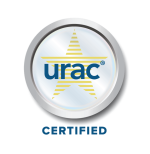The ever-evolving healthcare industry had slowly integrated the used of wearable devices to attain its ultimate goal in providing a high-quality healthcare.
Wearable devices or wearables are electronic devices that can be worn on a day-to-day basis and have the capabilities to collect the wearer’s physiological data. Some wearables are designed for preventive and maintenance care, while others are designed for patient and disease management.
Patients were monitored using wearable devices, and this monitoring provided significant benefits for clinical decision-making. Wearables have led to better healthcare, while reducing costs significantly. However, these innovations are always coupled with issues and challenges, such as patient reception and data security and privacy.
Wearable Health Devices
According to the National Center for Biotechnology Information (NCBI), wearable health devices (WHDs) are emerging technologies that enable continuous monitoring of vital signs throughout daily life, whether at work, at home, during sports activities, or in a clinical setting, with the benefit of minimizing discomfort and interference with normal activities.
WHDs commonly measure vital signs such as heart rate, blood pressure, body temperature, blood oxygen saturation, respiratory rate, ECG, and physical activities. These wearables include smartwatches, jewelry, clothes, eyeglasses, shoes, and so many others.
RELATED: The Internet of Medical Things (IoMT)
How do they work?
These wearables are embedded with sensors that enable devices to collect the patient’s physiological data, thus allowing real-time monitoring. Traditionally, to collect physiological data of patients, extensive equipment or medical devices are used. Patients must also stay in bed while these equipment or medical devices are attached to them. However, with WHDs, patients can move around while their vital signs are being wirelessly collected and transmitted to a remote monitoring system.
WHDs have undeniably changed the face of healthcare, especially that these wearables allow real-time remote patient monitoring (RPM).
WHDs and Remote Patient Monitoring
The most significant contribution of WHDs in the healthcare industry is the real-time monitoring of patients at home or elsewhere via RPM Systems. This advancement allows patients to have an everyday life while their health is being monitored – their vital signs continuously or intermittently collected and transmitted to an intelligent cloud system, where their healthcare providers can access at anytime and anywhere. On the other hand, patients, if they desire, may monitor their own vital signs using these wearables – giving them personal insights into their own health, resulting in better patient engagement.
Challenges
Each technological advancement entails risks and challenges. Utilizing WHDs to collect and measure health data from patients may raise concerns about data security and privacy. Additionally, some patients, particularly those who are less tech-savvy, may resent the disruption of their healthcare by modern technology. However, these dangers are avoidable, and these obstacles are surmountable.
Contributions of Wearables in the Healthcare Industry
WHDs have existed since the 1990s and have made numerous contributions to the healthcare industry over the years. Here are five contributions of wearables in the industry.
- Continuous Collection of Patients’ Health Data. With wearables, physicians can continuously collect their patients’ health data even outside any medical facility. This way, healthcare providers are given sufficient data to study and analyze, resulting in more accurate diagnoses and fewer medical errors. As a result, patients receive high-quality care.
- Convenience. Traditionally, to measure and collect patients’ health data, big machines, like the ECG machine, are needed. And most of the time, patients are required to stay in bed while their health data are collected. However, ECG and other health data can be measured and collected using smartwatches or other WHDs and even without the assistance of a healthcare provider.
- Accessibility. Traditionally, patients were required to visit a hospital or clinic to have their health data measured and collected, as the machines used to do so are only found in these medical facilities. However, WHDs are replacing these devices, making them accessible to patients as some of these wearables are available in the market.
- Cost. Aside from convenience and accessibility, WHDs aims to reduce healthcare cost. As mentioned earlier, some wearables are used for health risk prevention. Preventing a health risk to happen will surely reduce healthcare costs. Furthermore, some wearables are used for patient and disease management. Patient and disease management will result in reduced hospital admission and re-admission, which will eventually reduce healthcare costs.
- Better Patient Engagement. Studies have shown that patients who are more involved in their treatment or maintenance plan have lower hospital admissions and re-admissions. In the same studies, it showed that better patient engagements were achieved with the use of wearables.









